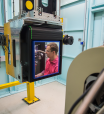Nuclear research techniques are an important tool for environmental scientists to understand past climates and anticipate the future
ANSTO has played a formative role and continues to make important contributions using nuclear and isotopic techniques to understand past climates and patterns of change, maintain water resource sustainability and provide insights into the impact of contaminate in the environment.











